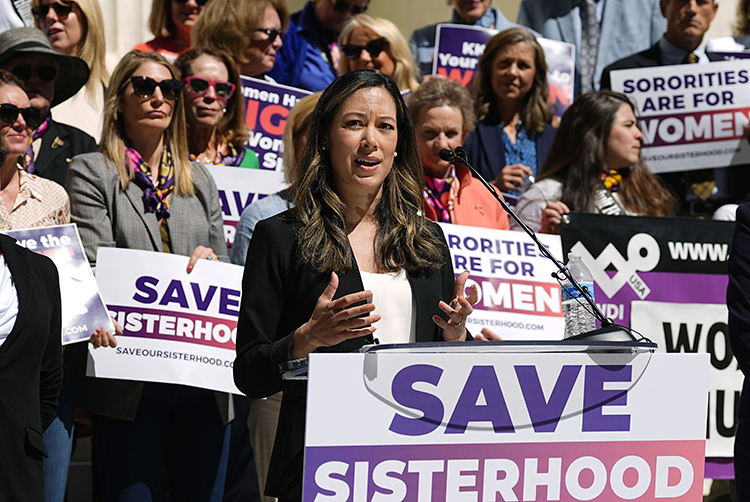By graduation, law students should understand what it means to act professionally: to succeed as a professional in a professional field. This doesn’t seem like a radical or controversial notion. But when looking back at your own legal education, where exactly were you taught the soft skills, norms and insights that underlie professionalism in practice? Was it embedded in the required 1L curriculum? Offered as an upper-level course? Mandated as a graduation requirement?
No, probably not. Chances are you were simply thrown to the wolves and expected to figure out how to fit into the pack. No time for questions or for practice. Just put your head down, assimilate and survive. That is, in effect, how we “teach” law students professionalism: Put your head down, assimilate and survive. And we wonder why our profession suffers from astronomical rates of burnout, career dissatisfaction, depression and substance abuse.
Judgment casting vs. solution finding
The problem is that professional identity formation and soft skill development have long been treated by employers, career advisers and legal educators as an assumed skill set: Young people should “just know” how to act professionally.
Students shouldn’t need a class to teach them to show up to a meeting on time, use complete sentences in their emails, dress appropriately for court or respond to their clients.
I get it. But casting judgment from our wise, experienced high horses causes us to miss the real question. We can lament that students shouldn’t need a class to address such “basic” skills and competencies all we want, but it doesn’t change the fact that they do.
Fortunately, two separate forces with overlapping interests have nudged the topics of professionalism and professional identity to the top of law schools’ “to do” list. Both the ABA and the Institute for the Advancement of the American Legal System are forcing law schools to explore ways to incorporate (and perhaps even mandate) professionalism, soft skills and value exploration into the law school curriculum.
ABA Standard 303(b)
In response to the rising levels of burnout, substance abuse, mental health issues and ethical complaints that continue to plague the profession, the ABA now requires law schools to incorporate professional identity formation into their legal curriculum.
Revised ABA Standard 303(b) mandates law schools to “provide substantial opportunities to students for … the development of a professional identity.” ABA Interpretation 303-5 further explains that these opportunities should involve “an intentional exploration of the values, guiding principles and well-being practices considered foundational to successful legal practice … during each year of law school.”
IAALS Foundations for Practice study
Ten years ago, the Institute for the Advancement of the American Legal System set out to determine the skills and characteristics that law school graduates needed to be successful in the practice. The project surveyed over 20,000 practicing attorneys across the country, spanning different practice areas and disciplines.
Ultimately, the study distilled and organized the responses into 76 “foundations for practice” that respondents considered necessary immediately out of law school. Spoiler alert: Soft skills won the day. In fact, less than a quarter of the foundations involved substantive legal skills or specialized knowledge. The other 75% were all grounded in character-based soft skills.
The IAALS summarized its study’s findings as follows: “Most law students graduate thinking they have the knowledge, skills and abilities necessary for practice, but that opinion is not shared by the profession they hope to enter or their future clients. Indeed, this gap reflects that legal education does not sufficiently prepare students for practice.”
Yikes.
Stepping up
Both the ABA and IAALS (and the thousands of legal employers who responded to the study) seem to be sending law schools a unified directive: “Spend more time teaching people, not just the law.”
So what exactly does that mean, and what does it look like in the classroom? Where do professional identity, soft skills and value exploration fit within the often formal and rigid framework of legal education?
Personally, I designed my course with three constituents in mind: Students, legal employers and the ABA. The Foundations for Practice framework essentially allows me to kill three birds with one stone: comply with ABA 303(b), focus on relevant in-demand traits as identified by legal employers, and prepare students with the skills they need to succeed in the real world.
But in the end, I don’t think there’s any one “right” way to teach law students professional soft skills. The “right” way to discuss professionalism, soft skills and values will be your way.
With that being said, creating something from nothing can be daunting and a bit overwhelming. Here is my Foundations for Practice framework as a potential starting point for anyone else interested in teaching a people-first approach to the profession.
Structure
I divide my course into five “modules” based on the IAALS Foundations for Practice Wheel.
• Module 1: Lawyer as Communicator (basic communication skills; emotional intelligence, self-awareness and self-control; compassion, humility and perceptiveness)
• Module 2: Lawyer as Professional (focus and habit formation; time, stress and boundary management; civility, respect and integrity)
• Module 3: Lawyer as Problem Solver (resourcefulness, patience, coachability and common sense; accountability, performance under pressure and self-regulation)
• Module 4: Lawyer as Self-Starter (initiative, motivation and goal-setting; seeking and receiving feedback; grit, resilience and positivity)
• Module 5: Professional Identity Formation (value exploration and self-worth; sustainability and well-being)
Assigned reading
Students are assigned articles, podcast episodes and other assessments that are related to the respective module’s foundations. Examples include: Emailing Professionally; Facial Expressions Emotional Intelligence Quiz; HBR Podcast: How to Be Less Distracted at Work and in Life; How Lawyers Can Optimize Performance Under Pressure; How (and When) to Motivate Yourself; and the National Task Force for Lawyer Wellbeing Report.
Examples of exercises and assignments
• Email assignment: Students are given instructions from a hypothetical law firm partner to email a client with a status update. Students must send me an actual email that complies with the partner’s directive and accurately conveys all information in a succinct professional manner.
• Time boxing: Students are tasked with scheduling their week in hour increments using a time boxing technique. During the following class, students shared their successes and struggles in sticking to their planned schedules.
• Mindset challenge reflection: Students are given a difficult research prompt with minimal guidance and a finite amount of time to complete the assignment. Students then submit a written reflection that describes both their research processes and mindset shifts throughout the task.
• Value statement: Students are asked to identify their values and incorporate them into a personal anchoring statement or “tagline.” Students then work in small groups to brainstorm additional ways to frame their values in a way that aligns with their desired professional identity.
I’m more than happy to share my full syllabus and class plan with anyone who is interested.
Soft skills are success skills. Professionalism is paramount. Both are necessary and teachable. Now is the time for law schools to examine whether they are truly equipping students with the essential skills—both soft and substantive—needed for practice. The ABA requires it, employers want it, students need it; and the future of the profession depends on it.
After a decade serving the judiciary in various capacities, Jillian Boone currently is a lecturer and assistant director of externships at the Ohio State University Moritz College of Law.
ABAJournal.com is accepting queries for original, thoughtful, nonpromotional articles and commentary by unpaid contributors to run in the Your Voice section. Details and submission guidelines are posted at “Your Submissions, Your Voice.”





